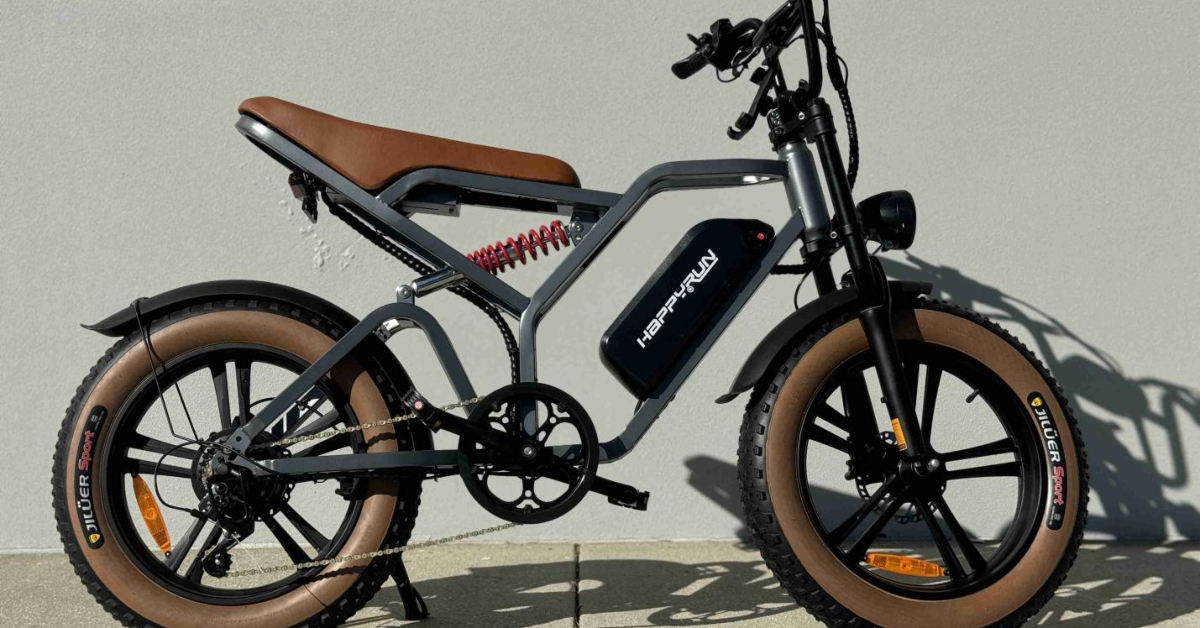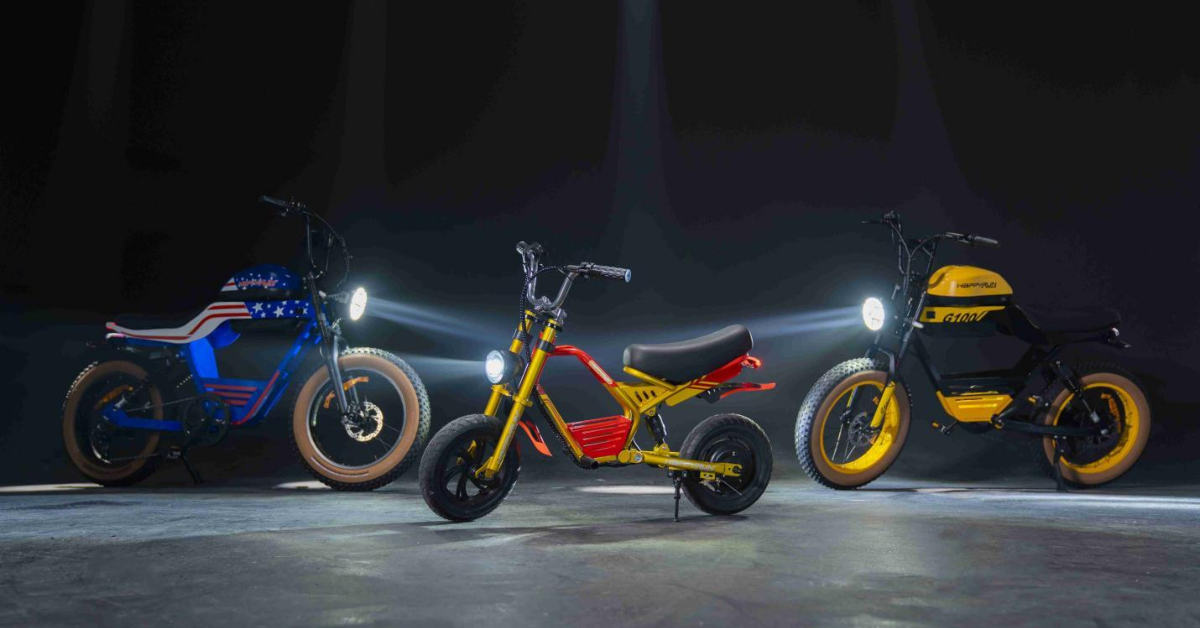The electric bicycle revolution is transforming urban transportation, with global e-bike sales expected to reach 40 million units in 2024, offering a sustainable and efficient alternative to traditional modes of travel that are both exhilarating and accessible to riders of all ages and abilities.
Adult electric bikes feature innovative and eco-friendly technology that allows them to beat traditional motorcycles in fuel consumption and emission rates. They are rechargeable, coupled with pedals or battery-powered, and reduce pollution and traffic gridlock. Moreover, high-torque e-bikes allow riders to save energy, making them a preferable option for sustainable transport.
The Environmental Benefits of Adult Electric Bikes
Although 2000w electric bikes have many environmental benefits over conventional vehicles, they are becoming a vital option for sustainable transport for city dwellers and commuters.
Zero Emissions
A key difference between e-bikes and gas-powered cars is that e-bikes emit no pollutants during operation, helping reduce air pollution and combat climate change. Electromobility has unique environmental advantages. By choosing an e-bike over a conventional car, individuals can significantly reduce their carbon footprint and help their community breathe cleaner, healthier air.
Energy Efficiency
Adult electric bikes are energy efficient and perform with limited power (far less than standard autos). With progressive improvements in battery technology and motor efficiency, e-bikes can travel longer distances on a single charge, making them a cost-effective and sustainable option for short routes and daily commutes.
Reduced Congestion
Adult electric bikes have the potential to reduce traffic congestion in large cities by improving commuting options for short trips. Public highway gridlock adversely affects commute times. With e-bike torque sensors, riders can avoid traffic jams and get to work quickly and stress-free.
Promoting Active Transportation
Fat tire electric bikes promote physical activity, outdoor recreation, and wellness, allowing riders to be more active and live healthier lifestyles. E-bikes differ from regular bicycles by providing pedal-assisted power, enabling riders to maintain a comfortable pace and tackle hills and inclines effortlessly. The combination of exercise and eco-friendly transportation makes e-biking an appealing choice for those seeking a “greener” lifestyle.
Impact on Urban Mobility

Electric Bike Long Range models are transforming urban commutes by providing a healthier, more affordable, and eco-friendly alternative to existing transportation modes. Here are some ways Electric Bike Long Range options are impacting urban mobility:
Last-Mile Connectivity
Long range electric bikes rank among the most convenient options for connecting transportation hubs with final destinations. They are an attractive choice for commuters, being efficient and affordable for the last mile. Many cities now have e-bike sharing stations and dedicated bike lanes.
Reduced Car Dependence
2000w electric bikes provide an eco-friendly alternative to car ownership for urban residents. They reduce the number of cars on the road and alleviate congestion on crowded highways with limited parking. People who integrate high torque e-bikes into their daily lives can save money on gas, parking, and maintenance while helping the environment.
Building Healthier Communities
Long range electric bikes encourage community mobility, environmental stewardship, and improved public health, leading to more livable communities. When people are encouraged to use fat tire e-bikes for transportation and recreation, cities can reduce rates of sedentary behavior, obesity, and chronic illness, resulting in better overall health and quality of life for residents.
Practical Tips for Going Green with Long Range E-Bikes
Choosing the Right E-Bike
Select a fat tire electric bike that suits your riding habits, style, and budget. Consider factors like motor power, battery range, frame design, and accessories to find an e-bike that fits your lifestyle.
Planning Your Routes
Research bike-friendly commuting routes, dedicated bike paths, and local cycling trails. Use e-bike torque sensors along with online maps and smart cycling apps to plan routes and discover new destinations reachable by high torque e-bike for simpler, more exciting rides.
Practicing Safe Riding Habits
Obey traffic lights, lanes, signals and road signs when riding your e-bike. Wear a helmet, use lights and reflectors for better road visibility, and use hand signals to communicate with other road users for a safe and enjoyable ride.
Maintaining Your E-Bike
Keep your e-bike in good condition with simple maintenance like cleaning, lubricating, and inspecting key components. Follow the manufacturer’s guidelines for battery care, including maintaining charge levels, temperature, and chemistry to ensure longevity.
Marketing Strategies for E-Bike Brands and Retailers
Emphasize Sustainability and Eco-Friendliness
Highlight the environmental benefits of e-bikes in your marketing messages. Educate consumers about how choosing an e-bike over a car reduces emissions, conserves energy, and promotes cleaner air. Use eco-friendly packaging and partner with environmental organizations to reinforce your green credentials.
Target Urban Commuters and Recreational Riders
Focus your marketing efforts on urban professionals who commute short to medium distances and are looking for efficient, cost-effective transportation. Also target recreational cyclists who want to ride further and faster without getting exhausted. Create buyer personas and tailor your messaging and product offerings to their specific needs and preferences.
Leverage User-Generated Content and Influencer Marketing
Encourage satisfied customers to share their e-bike experiences on social media using branded hashtags. Partner with cycling influencers and bloggers to create authentic content showcasing the joys and benefits of e-biking. Host community events and group rides to build brand loyalty and generate buzz.
Offer Flexible Financing and Trial Options
Make e-bikes more accessible and affordable by offering financing plans, installment payments, or subscription models. Provide risk-free trials or money-back guarantees so potential buyers can experience the benefits of e-bikes firsthand before committing to a purchase.
The Future of E-Bikes: Trends and Innovations
Smarter, Connected E-Bikes
Expect to see more e-bikes with integrated smart features like GPS tracking, theft detection, and smartphone connectivity. These innovations will make e-bikes more secure, convenient, and interactive, enhancing the overall riding experience.
Longer Range and Faster Charging
As battery technology continues to advance, e-bikes will be able to travel further on a single charge, reducing range anxiety. Rapid charging capabilities will also make it quicker and easier to top up the battery on the go.
Lightweight Materials and Sleek Designs
E-bike manufacturers are experimenting with lightweight materials like carbon fiber and aluminum to create more streamlined, visually appealing designs. These advancements will make e-bikes even more portable, efficient, and stylish.
Integration with Public Transit and Sharing Schemes
Expect to see more cities integrating e-bikes into their public transportation networks, with secure parking and charging facilities at transit hubs. E-bike sharing schemes will also become more prevalent, making it easy for people to access e-bikes on-demand without the need for ownership.
Conclusion
For eco-conscious consumers like urban commuters, recreational cyclists, and those with strong environmental values, high torque electric bikes are an ideal transportation solution. The combination of pedal-assist technology and electric propulsion provides an efficient, economical, and enjoyable way to get around with minimal environmental




